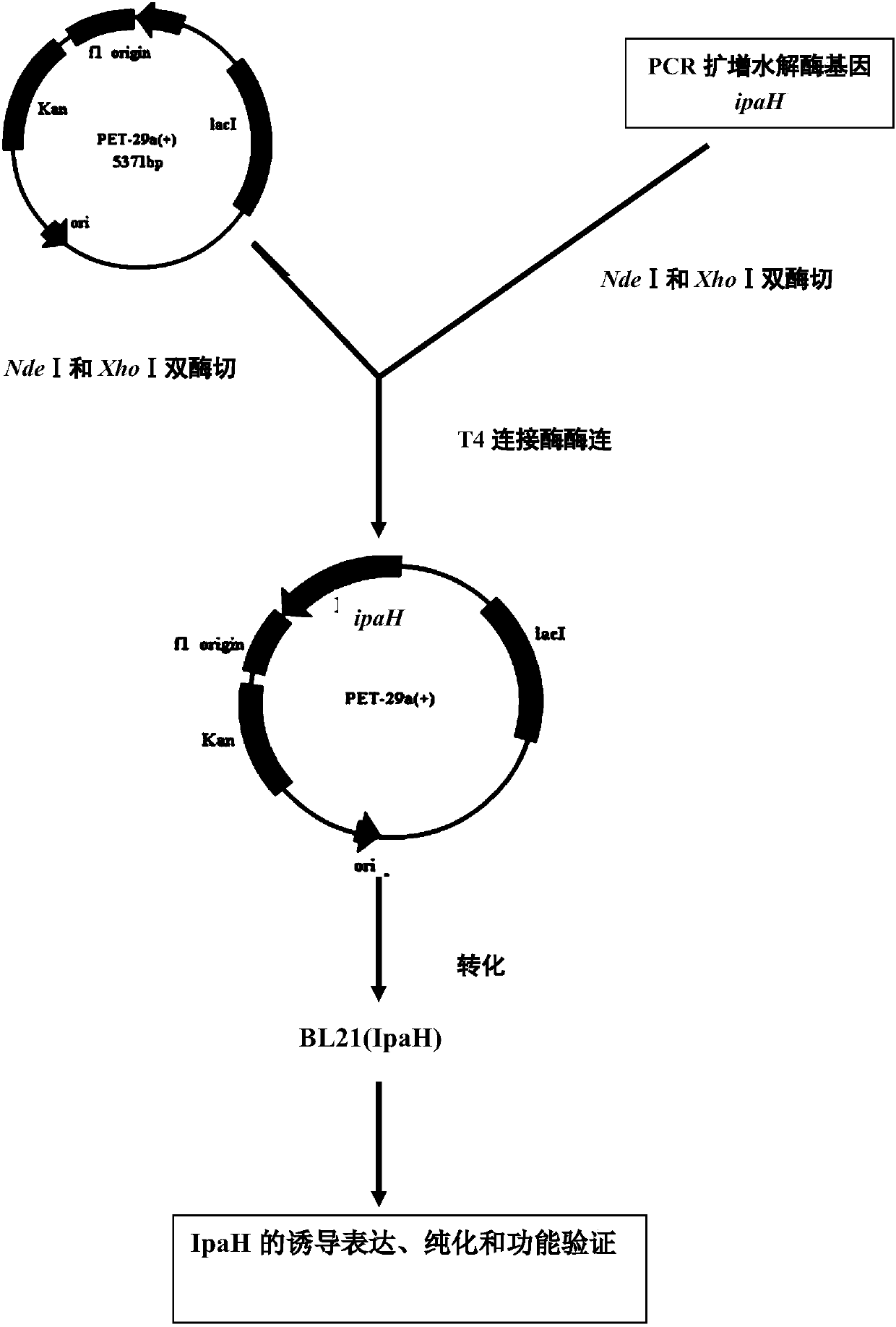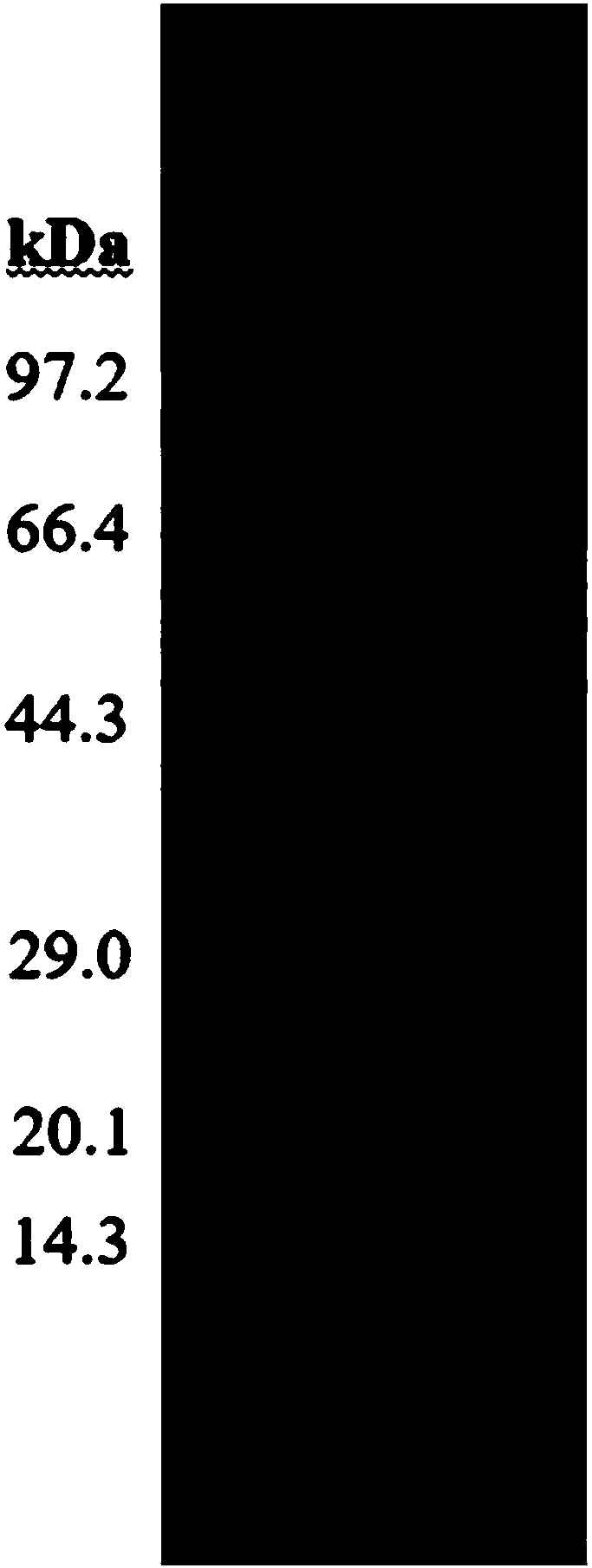Iprodione-degrading bacteria, degrading enzyme IpaH, encoding gene ipaH of degrading enzyme IpaH and application of iprodione-degrading bacteria, degrading enzyme IpaH and encoding gene ipaH
A technology of iprodione and gene, applied in iprodione-degrading bacteria, degrading enzyme IpaH and its coding gene ipaH and its application field
- Summary
- Abstract
- Description
- Claims
- Application Information
AI Technical Summary
Problems solved by technology
Method used
Image
Examples
Embodiment 1
[0035] 1.1 Isolation of iprodione-degrading bacteria YJN-5 (CCTCC NO.M 2017440)
[0036] The enrichment matrix used to enrich the iprodione-degrading strain was taken from the farmland soil of the vineyard in Langfang City, Hebei Province. Take 5.0 g of the farmland soil and add it to 100 ml of basic salt medium, add 50 mg L -1 Iprodione, 30°C, 180r·min -1 Cultivate for 5 days, transfer to the same medium with 5% inoculum size, transfer continuously for 3 times, and dilute the enrichment solution in gradient, take 10 -4 ~10 -7 Each 0.1mL of the diluted enrichment solution was applied to the 100mg·L -1 On the solid medium plate of iprodione, after culturing at 30°C for 3 days, pick the grown single colony and inoculate it in a medium containing 100mg·L -1 In iprodione inorganic salt medium, 30°C, 180r min -1 Cultivate on a shaking table for 3 days, and repeat to verify its degradation effect.
[0037] The basic salt medium formula is (1L): 1.0g NH 4 NO 3 , 1.0g NaCl, 1.5...
Embodiment 2
[0043] The cloning of embodiment 2 gene ipaH (technical route figure 1 )
[0044] The strategy adopted for cloning the gene is the shotgun method. First extract the total DNA of bacterial strain YJN-5, the total DNA is partially digested with Sau3AI and the pUC118BamHI / BAP vector (after pUC118DNA is digested by the restriction enzyme BamHI through the single cutting point on its multiple cloning site, and then sourced from E.coli Alkaline phosphatase (BAP) was dephosphorylated) enzyme-linked, and the enzyme-linked product was transformed into Escherichia coli DH5α competent cells to construct a total DNA library of strain YJN-5, and all clones were coated on a medium containing 100ppm ampicillin-resistant and 500ppm iprodione on the LB plate (iprodione is insoluble in water, and a precipitate will be formed in the LB plate, so the method of transparent hydrolysis circle is used to screen positive clones). Using this cloning method allows high-throughput screening of librarie...
Embodiment 3
[0062] Example 3 High-efficiency expression, purification and functional determination of iprodione hydrolase IpaH in BL21 (pET-29a (+)) (technical route figure 2 )
[0063] (1) PCR amplification of gene ipaH
[0064] Forward primer: 5’-GGAATTC CATATG GGTACTTCACCCCCAG-3' (SEQ ID NO.3) and reverse primer: 5'-CCG CTCGAG ACCAGCGTTGATGAACGG-3' (SEQ ID NO.4) was used as a primer to amplify the ipaH gene fragment from Paenarthrobacterureafaciens.YJN-5 (CCTCC NO.M 2017440) genomic DNA by PCR
[0065] Amplification system:
[0066]
[0067] PCR amplification program:
[0068] a. Denaturation at 98°C for 3 minutes;
[0069] b. Denaturation at 98°C for 0.5min, annealing at 58°C for 0.5min, extension at 72°C for 1.5min, and 30 cycles;
[0070] c. Extend at 72°C for 10 minutes and cool to room temperature.
[0071] (2) The PCR product was double digested with NdeI and XhoI.
[0073]
[0074] In a 37°C water bath, react for 30 minutes. The...
PUM
 Login to View More
Login to View More Abstract
Description
Claims
Application Information
 Login to View More
Login to View More - R&D
- Intellectual Property
- Life Sciences
- Materials
- Tech Scout
- Unparalleled Data Quality
- Higher Quality Content
- 60% Fewer Hallucinations
Browse by: Latest US Patents, China's latest patents, Technical Efficacy Thesaurus, Application Domain, Technology Topic, Popular Technical Reports.
© 2025 PatSnap. All rights reserved.Legal|Privacy policy|Modern Slavery Act Transparency Statement|Sitemap|About US| Contact US: help@patsnap.com



